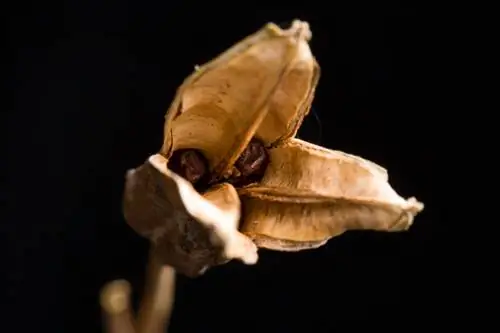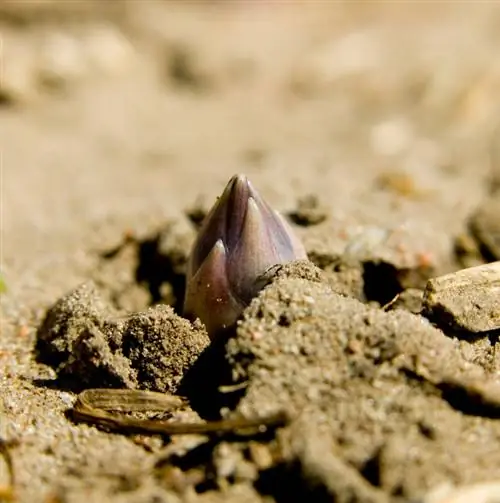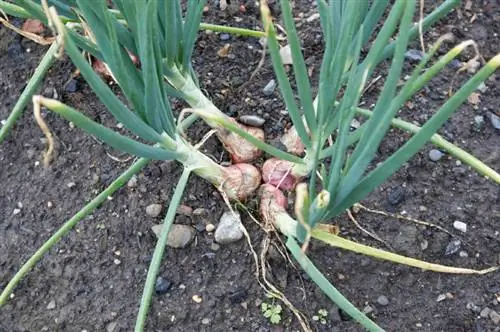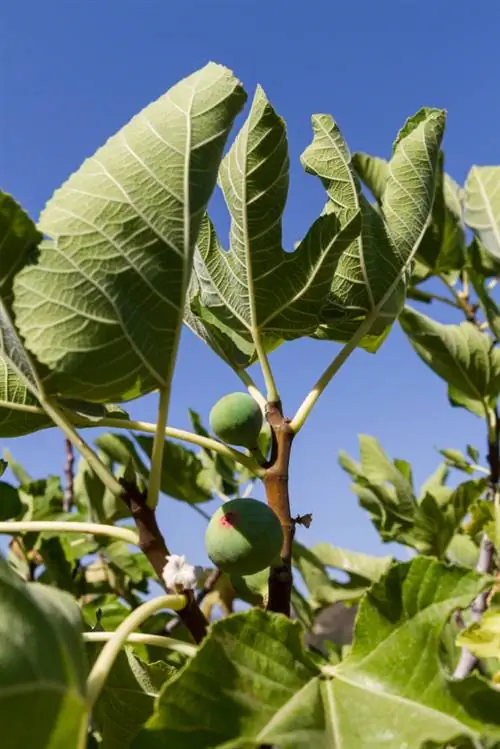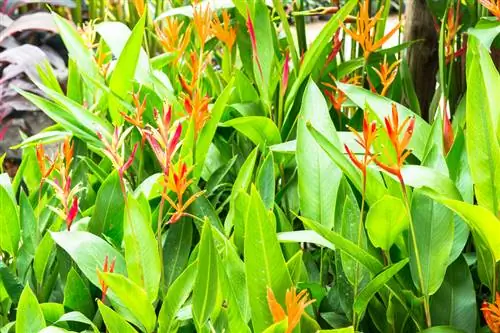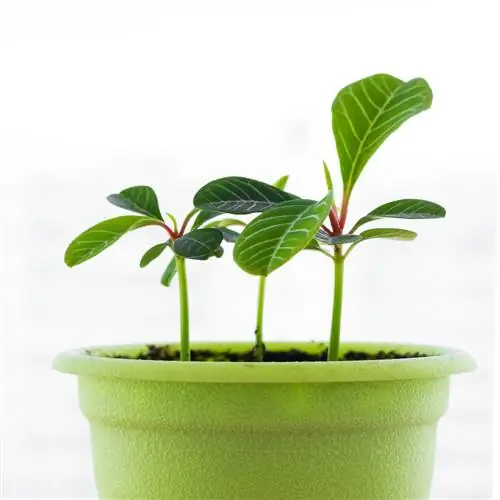- Author admin [email protected].
- Public 2023-12-16 16:46.
- Last modified 2025-01-23 11:20.
Actually, with the iris, often referred to as the iris, it is common to propagate the plants by dividing the rhizome. You can also collect the ripe seeds after the flowering period and germinate them in a targeted manner.
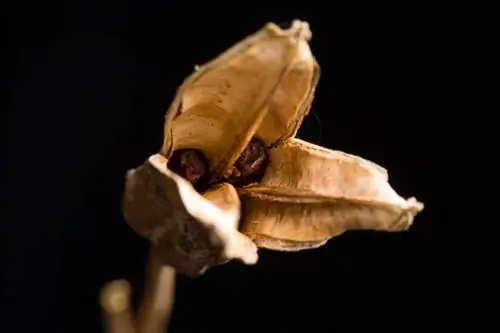
How do I harvest and sow iris seeds correctly?
To successfully harvest and sow iris seeds, collect the ripe seeds in late summer or fall when the seed pods are brown. The iris seeds require darkness, cold and prior stratification to germinate well. Germination takes up to three or four years until the first flowering.
What you need to know about iris seeds
If you do not cut off the seed pods of the iris after the flowers have withered, then over the years the plants will usually spread naturally in the garden through self-sowing. Inside the plants, which change color from green to brown, small, brownish seeds ripen in late summer. These can be sown outdoors in autumn or used all year round for cultivation on the windowsill. If you have planted different types of iris in your garden, then propagation by seeds can lead to interesting color crossings.
Harvesting the seeds at the right time
Even if the withered inflorescences of the iris are not exactly decorative in the flower bed, you must not cut them off before the seeds are ripe if you want to harvest ripe and germinable seeds. The exact time depends on the flowering period of the respective subspecies, but should be reached between late summer and autumn, depending on the weather in the year in question. After the seed capsules at the ends of the flower stalks have turned brown, they open as the level of dryness increases. You should then let the seeds air dry a little before packaging them for storage or using them directly for sowing.
The ideal conditions for the germination of iris seeds
Basically, when iris seeds are sown, it takes up to three or four years until the first flowering occurs, while when propagated by rhizome division, flowers can form in the following year. However, growing from seeds is the only way to obtain new color variants through crossing. The seeds of the iris are:
- Dark Germ
- Cold germination
- better germinability after stratification of the seeds
- to keep evenly moist during the germination phase
Tips & Tricks
Since the delicate iris plants can easily be overgrown by weeds when grown from seeds outdoors, growing them in pots is usually easier in terms of care.

